Modern hospital interior design is transforming healthcare spaces. It merges aesthetics with functionality.
Creating a healing environment is crucial in modern hospitals. The design influences patient recovery and staff efficiency. Thoughtful interiors can reduce stress and promote well-being. From color schemes to furniture, every detail matters. Natural light, soothing colors, and ergonomic furniture are key elements.
Modern designs prioritize patient comfort and safety. They also cater to the needs of healthcare professionals. Efficient layouts improve workflow and reduce fatigue. Modern hospital interior design aims to create a space that supports healing and care. It blends beauty with practicality for a better healthcare experience.
Patient-centered Design
Modern hospital interior design is shifting towards patient-centered design. This approach focuses on creating spaces that prioritize the comfort and needs of patients. The goal is to ensure a healing environment that promotes well-being. This concept encompasses various elements, including personalized spaces, comfort, and privacy.
Personalized Spaces
Personalized spaces are essential in a patient-centered design. Each room is tailored to meet the specific needs of the patient. This may include adjustable lighting and personalized decor. The aim is to create a familiar and comfortable environment.
- Adjustable lighting allows patients to control their surroundings.
- Personalized decor can include family photos or favorite colors.
These elements help reduce stress and create a sense of belonging. Patients feel more at home, which can positively impact their recovery.
Comfort And Privacy
Comfort and privacy are crucial in patient-centered design. Hospitals now use noise-reducing materials to create a quiet environment. This includes soundproof walls and ceilings.
| Element | Benefit |
|---|---|
| Soundproof walls | Reduce noise, ensuring a peaceful setting. |
| Private rooms | Offer patients a sense of privacy and dignity. |
Private rooms also allow patients to have personal moments with loved ones. This enhances emotional well-being and supports the healing process.
Comfortable furniture is another key aspect. Hospitals are now incorporating ergonomic chairs and adjustable beds. This ensures patients can rest and recover in comfort.
- Ergonomic chairs provide proper support.
- Adjustable beds cater to different needs and preferences.
In summary, patient-centered design focuses on making patients feel at home. It incorporates personalized spaces, comfort, and privacy. These elements together create a healing environment conducive to recovery.
You May Like It: Dos and Don’ts of Hospital Interior Design
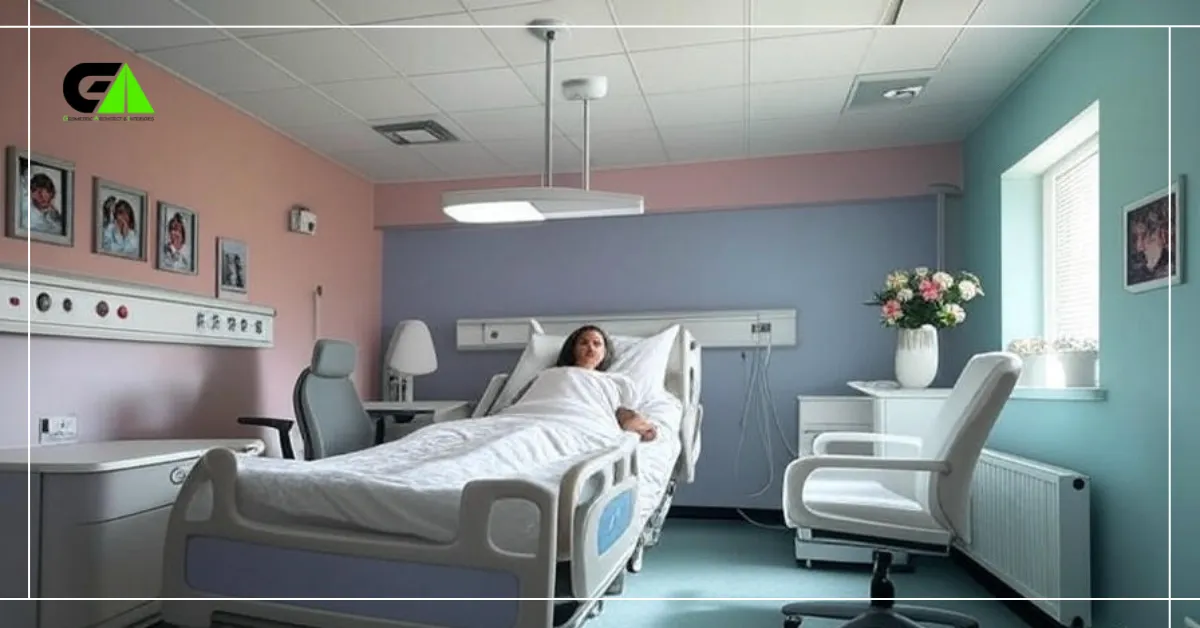
Natural Elements
Modern hospital interior design embraces natural elements to create a serene environment. These elements help reduce stress and improve patient well-being. Incorporating nature into design can offer a healing atmosphere for everyone.
Incorporating Nature
Bringing the outdoors inside is a key aspect of modern hospital design. This involves using materials like wood, stone, and water features. Natural light plays a crucial role too. Large windows and skylights allow sunlight to flood indoor spaces.
Plants are another natural element. They purify the air and add color. Their presence creates a calming effect. Vertical gardens and potted plants are common choices. They can be placed in waiting areas, corridors, and patient rooms.
Healing Gardens
Healing gardens are outdoor spaces designed for relaxation and recovery. These gardens are often equipped with walking paths, benches, and water features. Patients and visitors can enjoy the fresh air and greenery.
Studies show that exposure to nature aids in faster recovery. Healing gardens provide a peaceful escape from the clinical environment. They offer a place for meditation and reflection. Patients can spend time with family in a more natural setting.
These gardens are not just for patients. Staff members also benefit. They can take breaks in these serene spaces. This helps reduce burnout and improves job satisfaction.
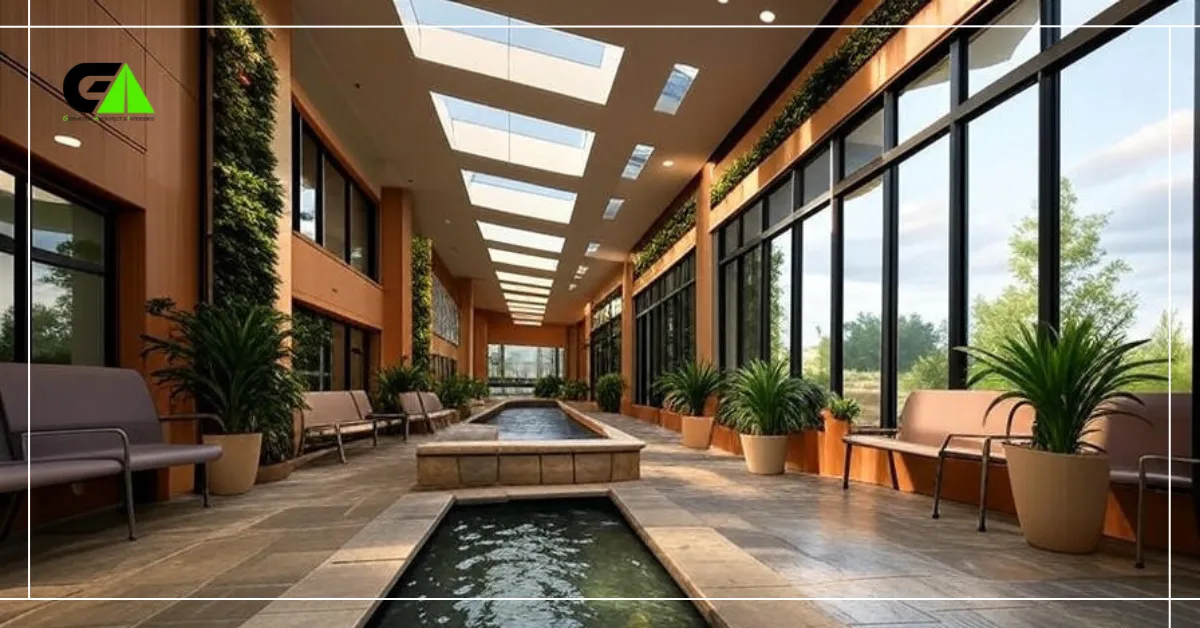
Technology Integration
Technology integration plays a vital role in modern hospital interior design. It enhances patient care, improves efficiency, and creates a more comfortable environment. From smart rooms to virtual consultations, technology reshapes how hospitals operate and serve patients.
Smart Rooms
Smart rooms in hospitals use advanced technologies to improve patient experiences. These rooms feature automated systems that control lighting, temperature, and entertainment. Patients can adjust settings using voice commands or touch screens. Smart rooms also help medical staff monitor patients more efficiently. Real-time data from smart devices provide crucial information, allowing for timely interventions.
Virtual Consultations
Virtual consultations are transforming patient-doctor interactions. They allow patients to receive medical advice without visiting the hospital. This reduces wait times and increases convenience. Doctors can conduct follow-ups and monitor patients remotely. Virtual consultations also facilitate communication between specialists across different locations. This ensures comprehensive care and better outcomes for patients.
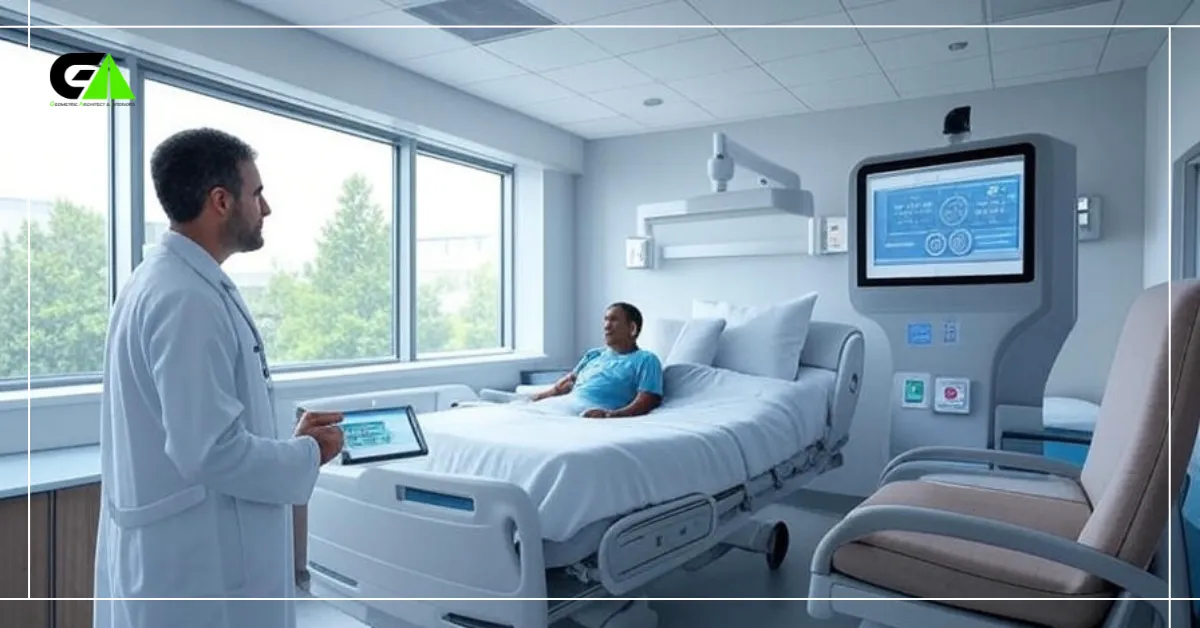
Safety And Accessibility
Modern hospital interior design must prioritize safety and accessibility. These elements ensure patients and staff can move freely and safely. Thoughtful design choices can greatly enhance the overall hospital experience.
Universal Design
Universal design creates spaces that are accessible to all people. Regardless of age, disability, or other factors, everyone can navigate the space comfortably.
-
Wide corridors for easy movement
-
Non-slip flooring materials
-
Automatic doors and accessible entry points
-
Clear signage with large fonts and braille
These features make the hospital environment more welcoming and safer for everyone.
Infection Control
Infection control is crucial in hospital design. It helps prevent the spread of diseases. Effective infection control starts with smart material choices and layout planning.
|
Material |
Benefit |
|---|---|
|
Antimicrobial surfaces |
Reduce bacteria spread |
|
Easy-to-clean finishes |
Quick and thorough cleaning |
|
Hands-free fixtures |
Minimize contact points |
Proper ventilation systems are also essential. They ensure good air quality and reduce infection risk. Clear separation of clean and contaminated areas is necessary. This prevents cross-contamination.
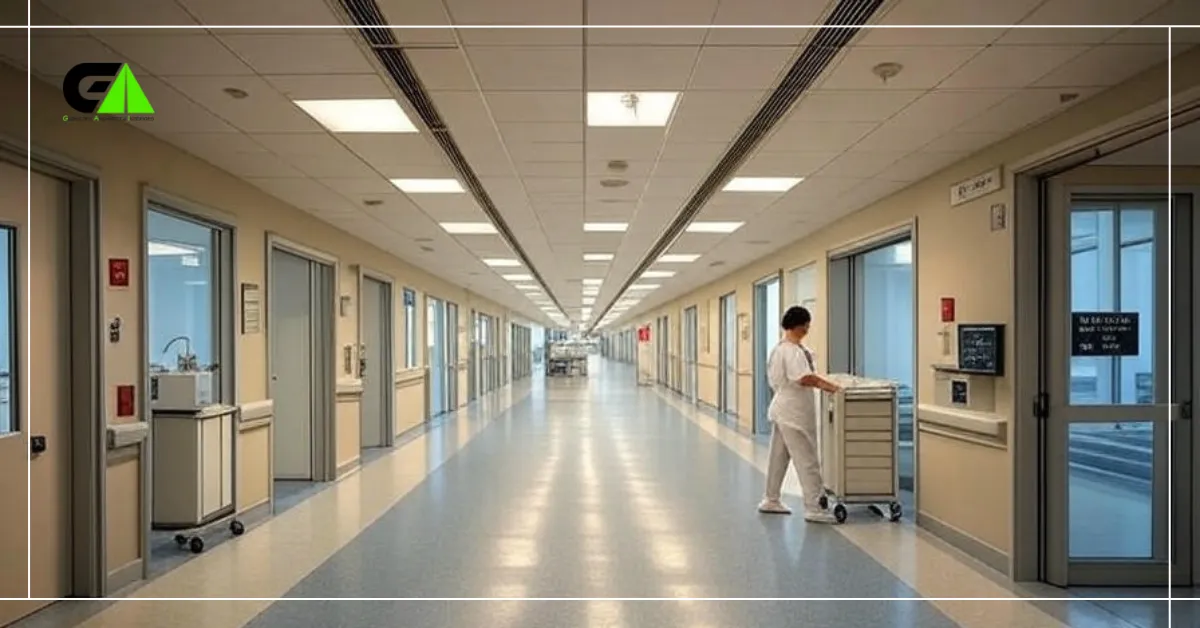
Aesthetic Appeal
Modern hospital interior design focuses on more than just functionality. Aesthetic appeal plays a crucial role in patient well-being. Beautiful spaces can create a calming and welcoming environment. This helps in reducing stress and promoting faster recovery.
Color Schemes
Color schemes are vital in hospital design. Soft, neutral colors evoke calmness. Blues and greens are particularly soothing. Bright colors can also be used, but sparingly. They can highlight important areas and create focal points.
Color affects mood and emotions. A well-chosen palette can make a hospital feel less clinical. This transforms it into a more comforting space.
Art Installations
Art installations can greatly enhance a hospital’s aesthetic appeal. They add a touch of humanity and warmth. Art can be both therapeutic and inspiring. Patients and visitors often find comfort in beautiful artwork.
Large murals, sculptures, and paintings can be placed in common areas. They provide visual interest and break the monotony. Smaller pieces can be placed in patient rooms to create a personalized touch.
Artwork can also serve a functional purpose. It can help in wayfinding by marking different sections. This makes navigation easier for patients and staff.
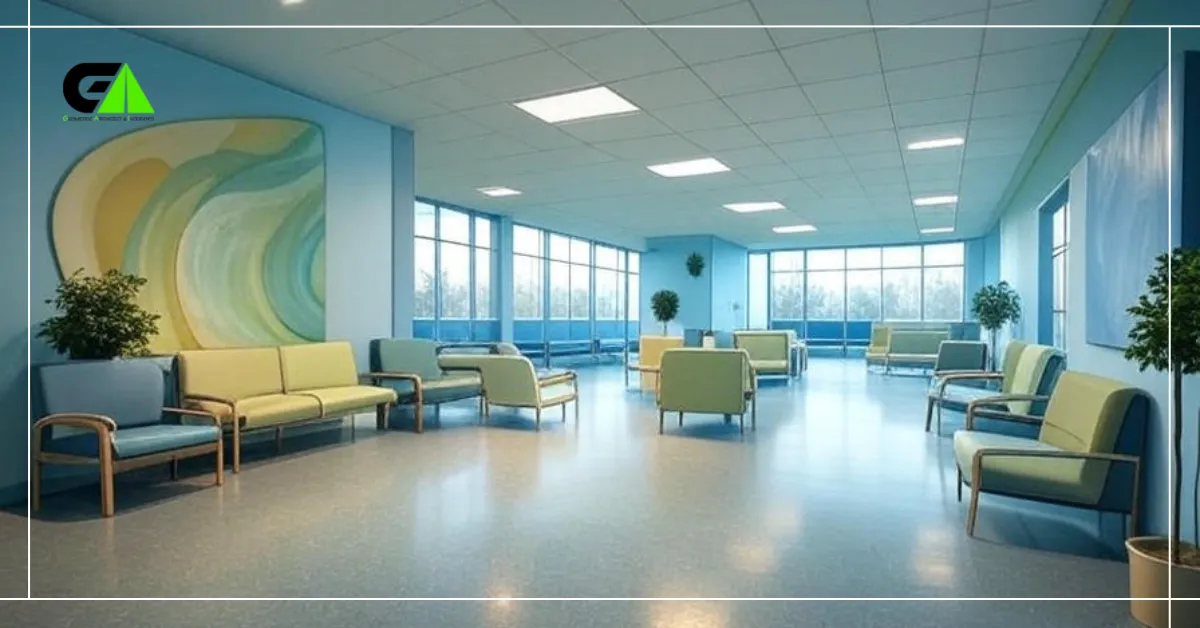
Sustainability Practices
Sustainability practices are crucial in modern hospital interior design. These practices ensure a healthier environment for patients and staff. They also reduce the hospital’s impact on the planet. Three main areas of focus are eco-friendly materials, energy efficiency, and waste reduction.
Eco-friendly Materials
Using eco-friendly materials is an essential part of sustainable design. These materials are non-toxic and sourced responsibly. They also often have a smaller carbon footprint.
Common eco-friendly materials include:
- Bamboo – A fast-growing, renewable resource.
- Recycled Steel – Reduces the need for new steel production.
- Low-VOC Paints – Improves indoor air quality.
These materials enhance the health and well-being of everyone in the hospital.
Energy Efficiency
Energy efficiency is another critical component of sustainable hospital design. Energy-efficient systems reduce operational costs and lower carbon emissions.
Key strategies for improving energy efficiency include:
- LED Lighting – Uses less energy and lasts longer.
- Smart HVAC Systems – Adjusts heating and cooling based on occupancy.
- Solar Panels – Generates renewable energy on-site.
These strategies create a more sustainable and cost-effective hospital environment.
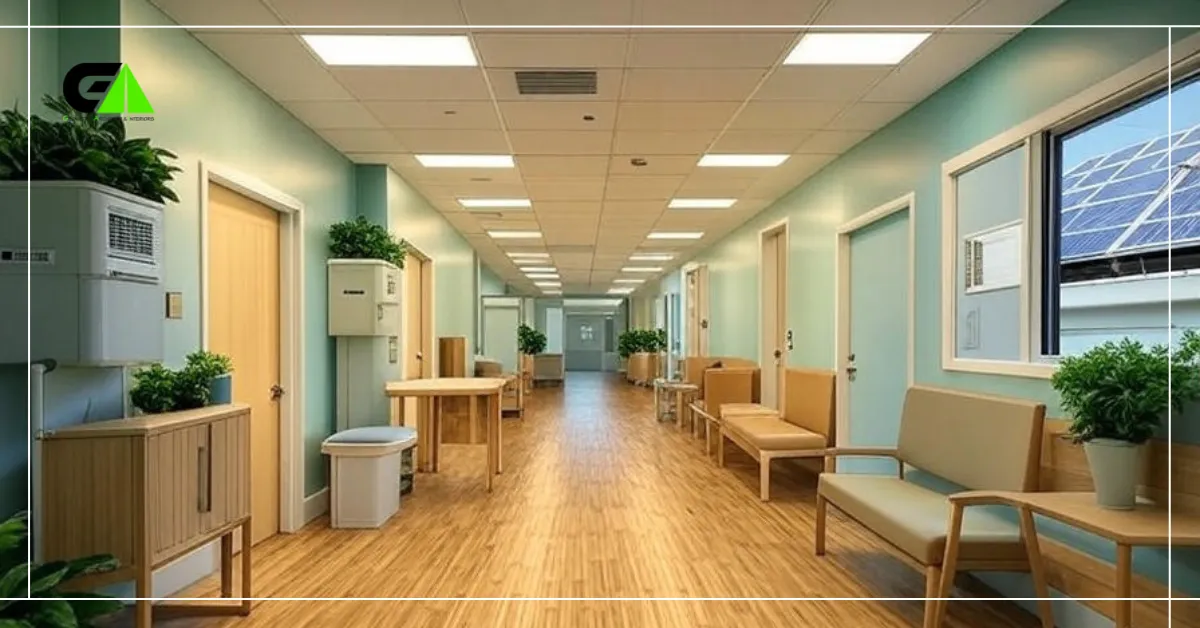
Wayfinding Systems
Modern hospital interior design prioritizes patient comfort and ease of navigation. Effective wayfinding systems are crucial for achieving this goal. These systems help patients and visitors navigate the hospital effortlessly, reducing stress and enhancing their overall experience.
Clear Signage
Clear signage is essential in any hospital. Signs should be easy to read and strategically placed. Large, bold text and contrasting colors enhance visibility. Arrows and symbols simplify understanding. It’s vital to use universally recognized symbols for areas like emergency, restrooms, and exits. Multilingual signs can also assist non-English speaking visitors. Ensure that signs are at eye level for both standing and wheelchair-bound individuals.
Digital Directories
Digital directories offer a modern solution for wayfinding. These interactive screens provide real-time information. Users can search for departments, rooms, and services. Maps and step-by-step directions make navigation simple. Updates can be made instantly, ensuring accuracy. Digital directories can also display important announcements and emergency alerts. Touchscreen technology enhances user interaction, making the process intuitive.
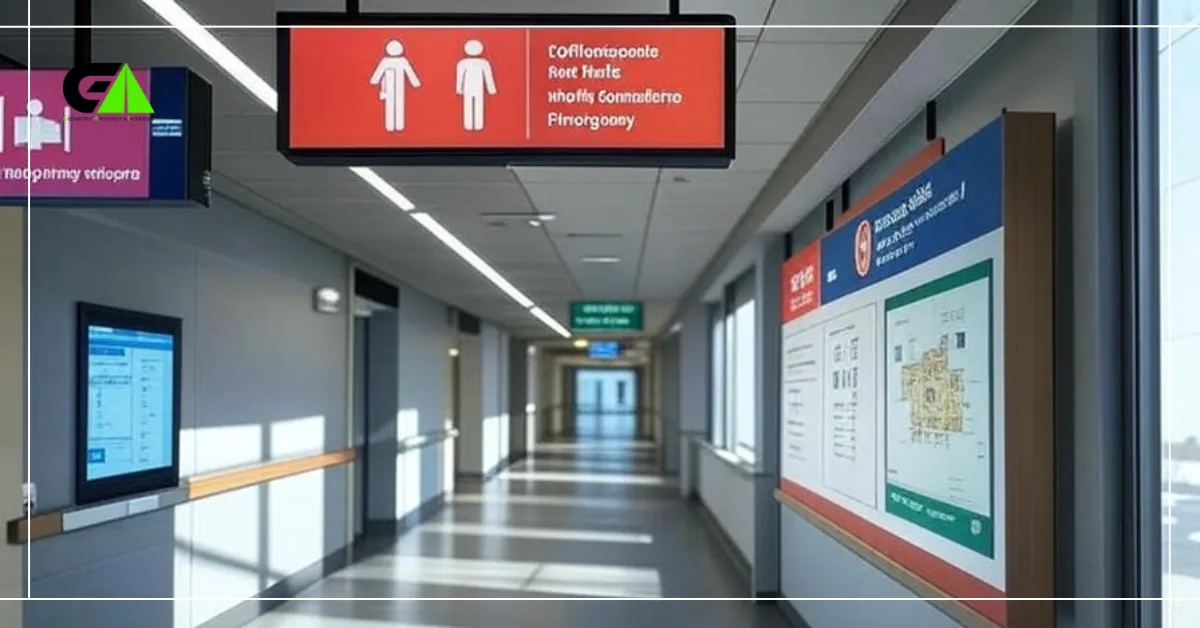
Community Spaces
Modern hospital interior design places significant emphasis on community spaces. These areas are essential for patient and family comfort. They foster social interaction and provide a sense of community. Well-designed community spaces can enhance the overall hospital experience.
Family Areas
Family areas are crucial in modern hospitals. They offer a comfortable space for loved ones. These areas often include cozy seating, private rooms, and refreshment stations. A calm and inviting atmosphere helps reduce stress for families. It also allows them to be close to their hospitalized relatives.
Modern family areas may feature:
-
Comfortable couches and chairs
-
Television and entertainment options
-
Quiet rooms for rest and privacy
-
Access to Wi-Fi and charging stations
These amenities ensure families feel supported and connected. They play a vital role in the healing process.
Social Interaction Zones
Social interaction zones are designed to encourage communication. They provide spaces where patients, families, and staff can interact. These zones often include open seating areas, communal tables, and activity centers. They help break the monotony of hospital stays and promote well-being.
Key features of social interaction zones include:
-
Open and airy design
-
Natural lighting and greenery
-
Interactive displays and art installations
-
Spaces for group activities and events
These zones make hospitals feel less clinical and more welcoming. They foster a sense of community and improve the overall hospital environment.
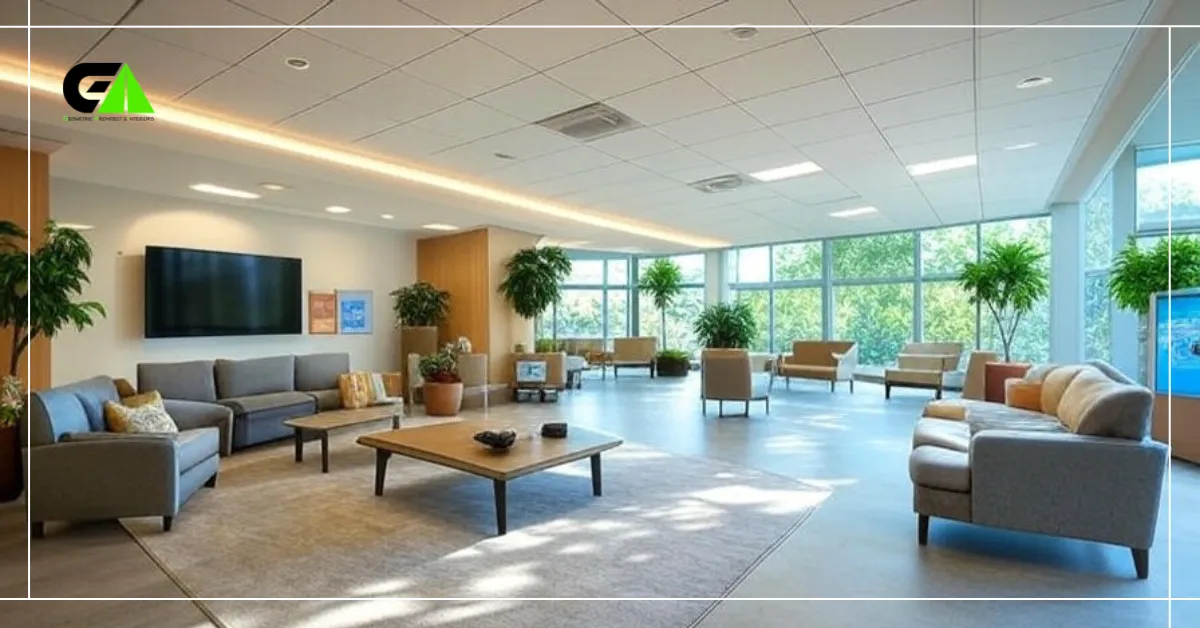
Frequently Asked Questions
What Are The Key Elements Of Modern Hospital Interior Design?
Modern hospital interior design focuses on functionality, comfort, and aesthetics. Key elements include natural lighting, calming colors, ergonomic furniture, and advanced technology integration. These elements enhance patient experience and staff efficiency.
How Does Lighting Impact Hospital Design?
Lighting plays a crucial role in hospital design. Natural light improves mood and recovery. Artificial lighting must be adjustable and non-intrusive. Proper lighting enhances patient comfort and staff performance.
Why Is Color Important In Hospital Interiors?
Color influences patient well-being and recovery. Calming colors like blue and green reduce stress. Bright colors in specific areas can energize patients and staff. Proper color selection creates a healing environment.
How Can Technology Improve Hospital Interiors?
Technology enhances hospital interiors by improving patient care and staff efficiency. Smart systems for lighting, temperature, and patient monitoring create a seamless experience. Advanced tech ensures safety and comfort.
Conclusion
Modern hospital interior design impacts patient comfort and staff efficiency. Thoughtful design choices create healing environments. Natural light and calming colors reduce stress. Well-planned layouts improve workflow and safety. Incorporating modern technology enhances patient care. Design plays a key role in modern healthcare settings.
Hospitals can feel welcoming and efficient with the right design. This benefits everyone, from patients to healthcare professionals.

